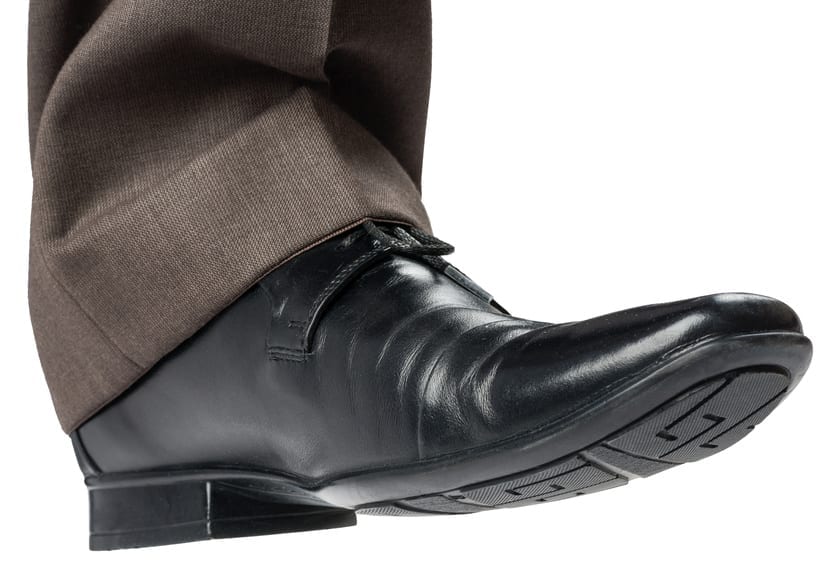Trouser Breaks: What Are They and Why Are They So Important?

It can be tough to make sure your premium men’s suits fit correctly, especially if you’re not in the habit of buying custom tailored clothing. But when you buy off the rack and don’t pay a visit to your tailor, you run the risk of wearing ill-fitting clothes.
One of the worst (and unfortunately, most prevalent) examples of this pertains to the length of men’s dress trousers. While the average height for men in the U.S. is 5’7″, there are far too many professionals out there wearing high end men’s trousers that are far too long or way too short for their frame.
That said, the length of your pants can come down to personal preference. That’s certainly true in regard to your trouser break. But if the idea of trouser breaks eludes you, fear not. We’re here to explain the different types and why choosing to have one (or not) matters quite a bit.
What exactly is a trouser break?
A trouser break refers to the crease or fold in the fabric of your men’s dress trousers on the bottom portion of the leg above your shoe. There’s nothing that says you have to have a trouser break at all, but there are certain body types and garments that look best with one. There are actually a few different types of trouser breaks, which we will explain below.
Full break
A full trouser break refers to a fold that runs all the way around the pant leg. This style features the longest hem and is probably one of the most difficult to pull off. It really looks best with wider formal trousers or some types of casual men’s pants. The full break is best left to taller men, heavier-set fellows, or those who like a more conservative or vintage look.
Medium break
The medium break (or half-break) is essentially the standard for most men. It’s a fold that bends in to your ankle a bit. It’s a bit safe, but it’s universal, so you’ll never offend with this choice. If you ever plan to cuff your pants for a casual feel, you should opt for this break as well. It’s also better for those who don’t like slim-fit or tapered men’s dress trousers, as a rule.
Slight break
Looking for something a bit more fashion-forward but don’t want to totally “break” with tradition? You can go with just a slight break. This contemporary option actually makes the back of the pant leg have a slightly longer look than the front, and it looks best when the hem remains uncuffed. However, keep in mind that it’s best for slim fit trousers. It’s a great way to say you’re a modern gentleman without being a slave to trends.
No break
Some men don’t want to have a break in their trousers. This look is really meant to be the exception, not the rule; only certain people can really make it look good. Slim or shorter gentlemen are usually the ideal for a no-break trouser. It’s very European in feel and can look very clean and smart.
Although your pants should never be too long or too short, the rest is really up to you. Your tailor is usually your best resource when you want to choose your trouser break. If you aren’t sure which type would look best on you, they would be more than happy to advise you on the matter. Just make sure whatever break you choose conveys the image you want to present to the world.

